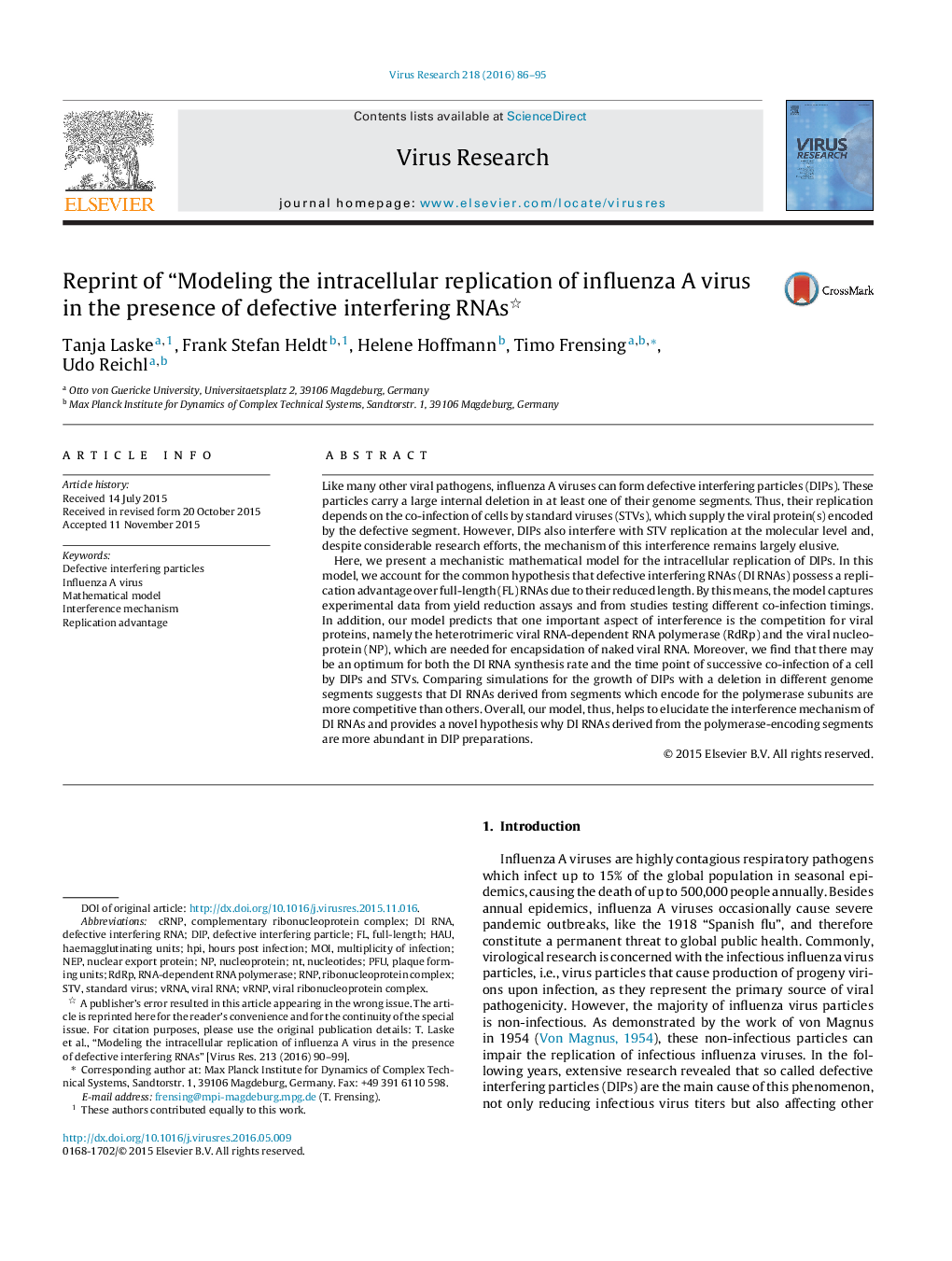| Article ID | Journal | Published Year | Pages | File Type |
|---|---|---|---|---|
| 6142116 | Virus Research | 2016 | 10 Pages |
â¢We developed a model for the intracellular replication of influenza virus DI RNAs.â¢The model elucidates changes in the release of progeny DIPs and standard virus.â¢DI RNA synthesis leads to the depletion of viral proteins (encapsidation factors).â¢The replication advantage and co-infection timing affect DI RNA propagation.â¢DI RNAs of polymerase gene origin are more competitive than others.
Like many other viral pathogens, influenza A viruses can form defective interfering particles (DIPs). These particles carry a large internal deletion in at least one of their genome segments. Thus, their replication depends on the co-infection of cells by standard viruses (STVs), which supply the viral protein(s) encoded by the defective segment. However, DIPs also interfere with STV replication at the molecular level and, despite considerable research efforts, the mechanism of this interference remains largely elusive.Here, we present a mechanistic mathematical model for the intracellular replication of DIPs. In this model, we account for the common hypothesis that defective interfering RNAs (DI RNAs) possess a replication advantage over full-length (FL) RNAs due to their reduced length. By this means, the model captures experimental data from yield reduction assays and from studies testing different co-infection timings. In addition, our model predicts that one important aspect of interference is the competition for viral proteins, namely the heterotrimeric viral RNA-dependent RNA polymerase (RdRp) and the viral nucleoprotein (NP), which are needed for encapsidation of naked viral RNA. Moreover, we find that there may be an optimum for both the DI RNA synthesis rate and the time point of successive co-infection of a cell by DIPs and STVs. Comparing simulations for the growth of DIPs with a deletion in different genome segments suggests that DI RNAs derived from segments which encode for the polymerase subunits are more competitive than others. Overall, our model, thus, helps to elucidate the interference mechanism of DI RNAs and provides a novel hypothesis why DI RNAs derived from the polymerase-encoding segments are more abundant in DIP preparations.
Graphical abstractDownload full-size image
